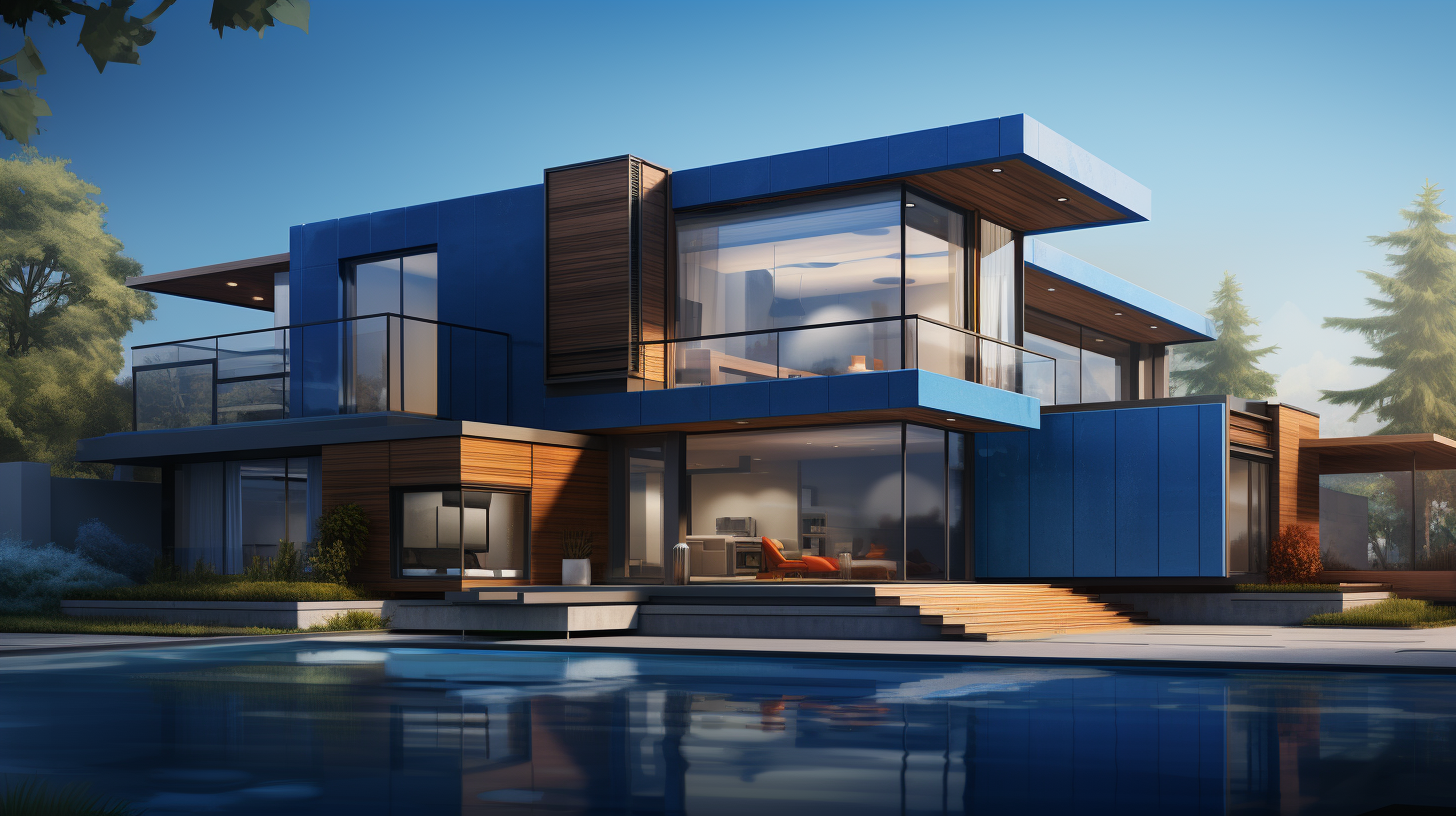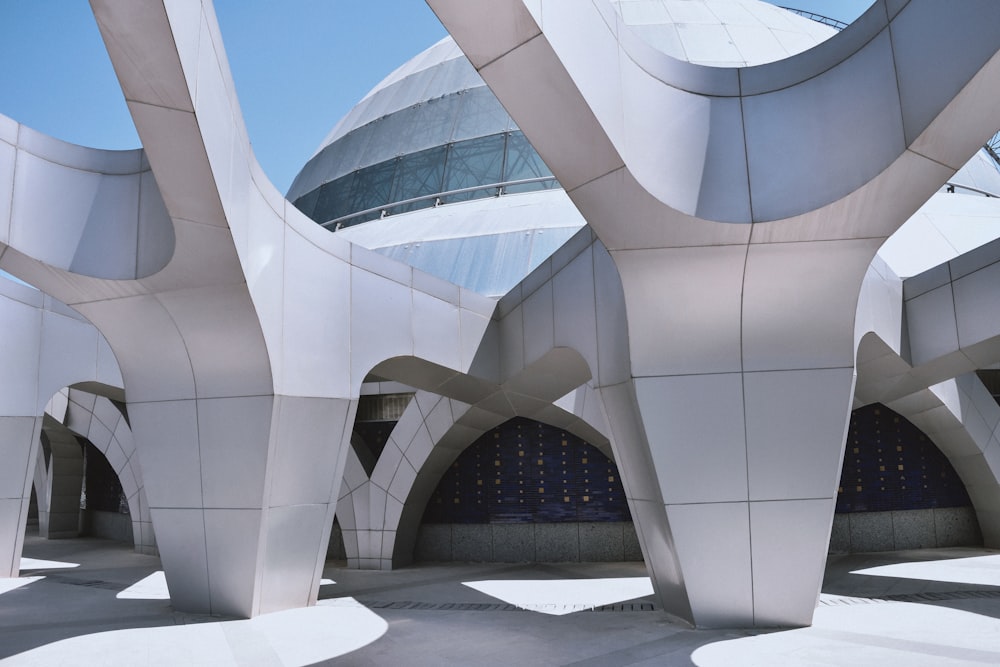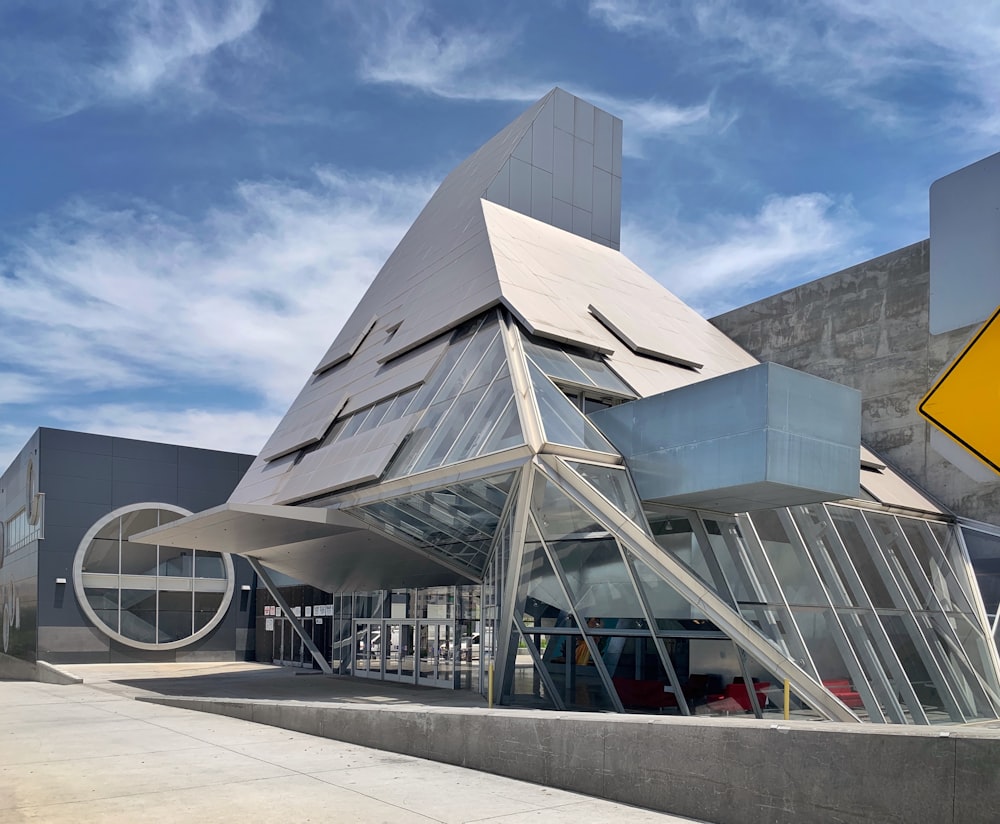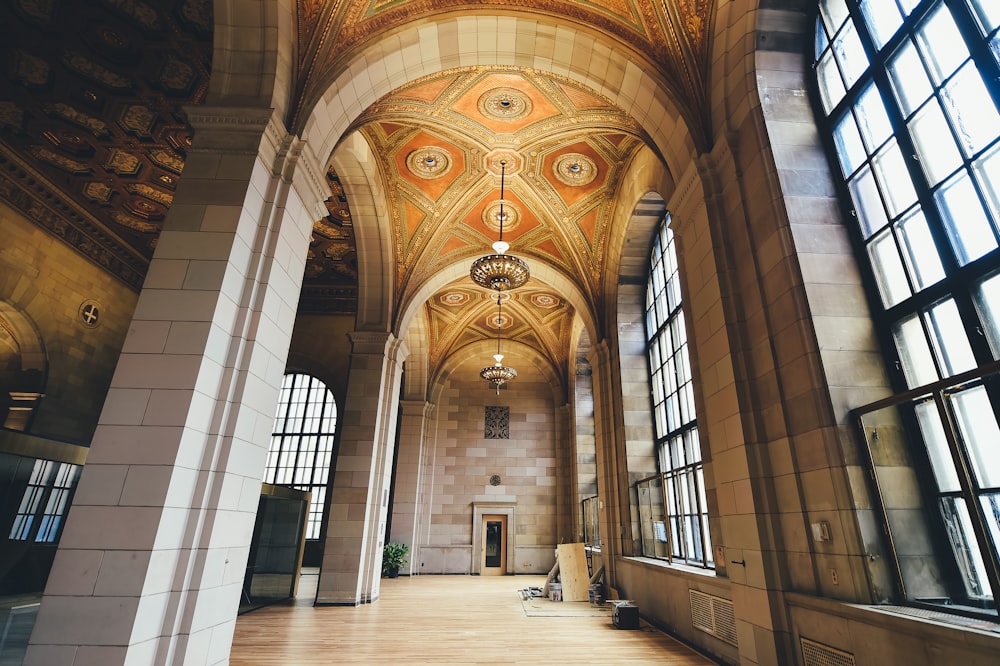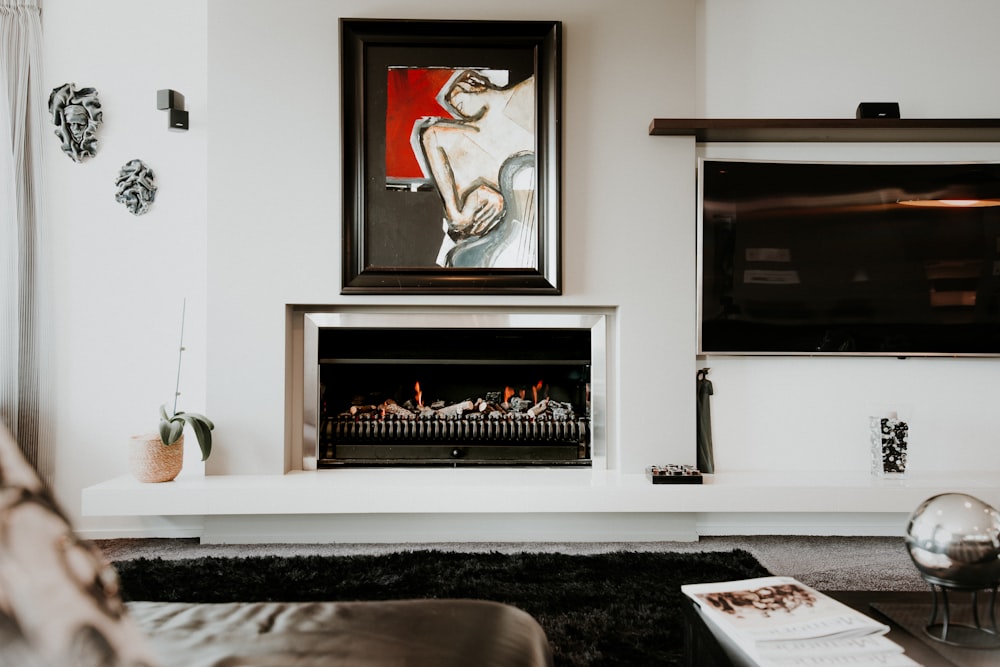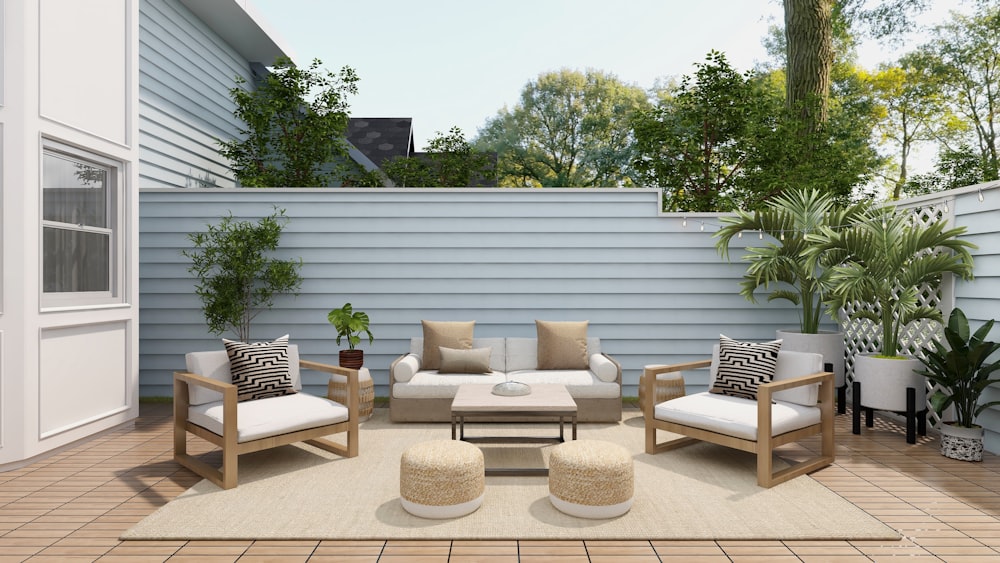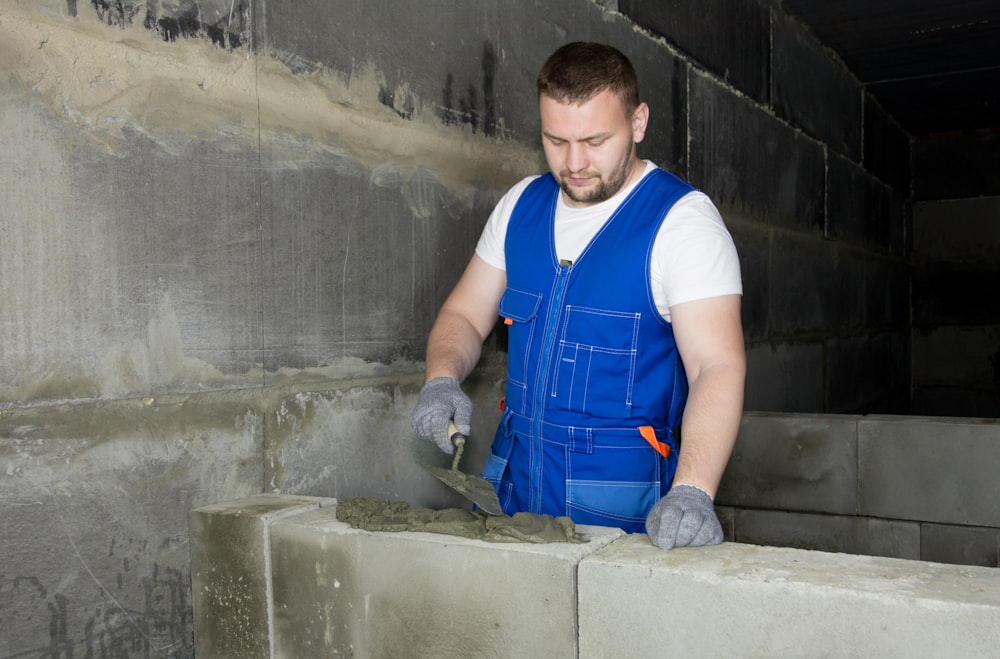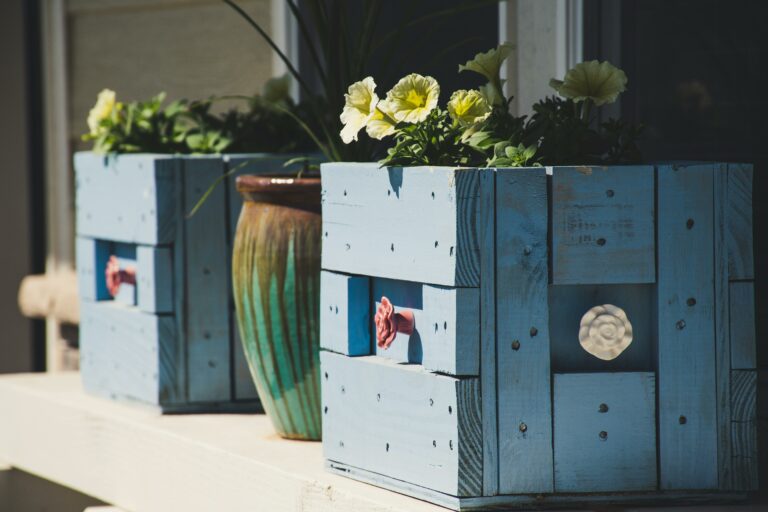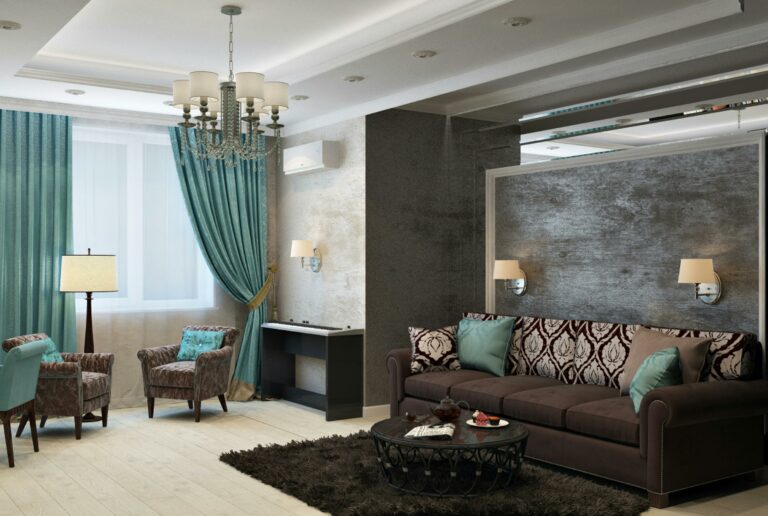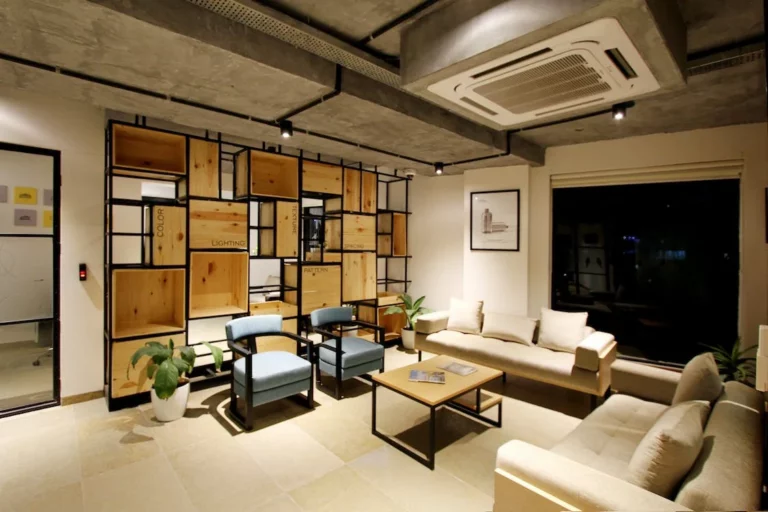The Art of Mixing Materials : Creative Architectural Ideas for Homeowners in 2023
Welcome to the world of creative architectural design! If you’re a homeowner looking to elevate your space, you’re in for a treat. Mixing different materials in your home’s architecture is a trend that can transform your space from ordinary to extraordinary. By incorporating unique combinations, you can add visual interest, enhance functionality, and create a home that truly reflects your personality.
In this article, we will explore the art of mixing materials and how it can be applied to both the exterior and interior of your home. We’ll also dive into how material mixology can enhance specific features of your home, such as entrances, staircases, and fireplaces. And finally, we’ll touch on how you can take your outdoor spaces to the next level with creative combinations of materials.
So, get ready to be inspired and discover new possibilities as we delve into the world of material mixology in architecture. Let’s uncover the secrets to creating a space that is truly unique and showcases your personal style.
Table of Contents
Understanding Material Mixology
When it comes to designing your home, one of the most exciting things to consider is the use of different materials. Mixing materials in architecture adds depth, character, and visual interest to your space. It allows you to create unique and personalized designs that reflect your style and taste. This is where the art of “material mixology” comes in. In this section, we will explore the concept of material mixology in architecture and provide you with some key insights to help you understand and master this design technique.
Exploring Different Materials
In material mixology, the goal is to combine different materials that complement and enhance each other. By using a variety of materials, you can create a visually dynamic space that captures attention and creates a sense of intrigue. Some common materials used in architectural design include wood, concrete, brick, metal, natural stone, glass, and textiles. Each material has its own unique properties and characteristics that can contribute to the overall aesthetic of your space.
Analyzing Material Compatibility
When mixing materials, it’s essential to consider their compatibility. Some materials naturally work well together, while others may clash and create a discordant look. Consider factors such as color, texture, and pattern when selecting materials. Look for materials that have a harmonious relationship, either by complementing each other or by creating an interesting contrast. For example, pairing the warmth of wood with the coolness of metal can create a visually appealing balance.
Considering Aesthetics and Functionality
When choosing materials, it’s important to think about both aesthetics and functionality. Your materials should not only look good but also serve their intended purpose. Consider how the materials will perform in different environments and how they will age over time. For example, if you’re designing an outdoor space, you’ll need materials that can withstand the elements. Balancing aesthetics and functionality will ensure that your design stands the test of time.
By understanding these key principles of material mixology, you can start to experiment and create unique designs that reflect your personal style. The possibilities are endless when it comes to mixing materials in architecture. Now, let’s move on to exploring some creative ideas for using mixed materials in exterior design.
“Material mixology is all about creating a harmonious balance between different materials, combining them in a way that enhances the overall aesthetic and functionality of your space.”
Exterior Design Inspirations
When it comes to the exterior design of your home, mixing different materials can create a visually stunning and unique look. By combining different elements, you can add depth, texture, and personality to your home’s facade. Here are some inspiring ideas for mixing materials in your exterior design:
Combining Wood and Concrete for a Modern Look
- One popular combination that creates a sleek and modern aesthetic is the pairing of wood and concrete. This combination can be used in various ways, such as using wood siding with concrete accents or incorporating a concrete pathway with wooden steps leading up to the entrance.
- Wood brings warmth and natural beauty, while concrete adds a contemporary and industrial touch. The contrast between the two materials creates an interesting visual dynamic that is both inviting and sophisticated.
Creating Visual Contrast with Brick and Metal
- Another exciting material mixology idea is the combination of brick and metal. This pairing can create a striking contrast that catches the eye. For example, using brick as the main exterior material and adding metal accents, such as railings or window frames, can give your home a unique and modern look.
- Brick provides a timeless and classic feel, while metal adds a touch of edginess and contemporary charm. This combination can transform your home’s exterior into a work of art that stands out from the rest.
Blending Natural Stone and Glass for Elegance
- If you’re looking to add a touch of elegance and sophistication to your home’s exterior, consider mixing natural stone and glass. This combination creates a harmonious and luxurious look that exudes refinement.
- Natural stone brings a sense of authenticity and durability, while glass adds a sleek and transparent element. Using natural stone as cladding and featuring glass in large windows or as decorative elements can elevate the overall design of your home and create a stunning visual impact.
Incorporating different materials in your exterior design can transform the look and feel of your home. It allows you to express your unique style while creating a visually captivating facade. Whether you prefer a modern, industrial, or elegant aesthetic, mixing materials can help you achieve the desired effect.
By exploring different material combinations, analyzing their compatibility, and considering aesthetics and functionality, you can create an exterior design that truly reflects your personality and makes a statement in your neighborhood. So go ahead, get creative, and turn your home into a masterpiece!
Interior Design Innovations
When it comes to interior design, there’s no shortage of possibilities. And if you’re looking to add a touch of creativity and uniqueness to your home, consider the art of mixing materials. By combining different materials in your interior design, you can create a space that is both visually appealing and functional. Here are some innovative ideas to help you get started:
Mixing Wood and Metal for Industrial Chic
One of the most popular trends in interior design right now is the industrial chic style. This style combines the warmth and natural beauty of wood with the sleek and modern look of metal. Consider incorporating a wooden dining table with metal legs, or add a metal bookshelf to a room with wooden flooring. This combination creates a harmonious balance between nature and modernity.
Incorporating Concrete and Glass for a Contemporary Feel
Concrete and glass are two materials that are often associated with contemporary design. By incorporating these materials into your interior design, you can achieve a sleek and minimalist look. Consider using concrete countertops in your kitchen or adding glass partitions to separate different areas of your home. This combination adds a touch of elegance and sophistication to any space.
Combining Stone and Textiles for Warmth and Texture
Stone and textiles are perfect for creating a cozy and inviting atmosphere in your home. Consider using stone accents, such as a stone fireplace or a stone wall, to add a touch of rustic charm. Then, complement these elements with soft textiles, like throw pillows or curtains, to create a warm and inviting space. This combination of materials adds depth and texture to your interior design.
When it comes to mixing materials in your interior design, the possibilities are endless. But before you begin, here are a few tips to keep in mind:
- Maintain Cohesion and Balance: While mixing materials can add interest to your space, it’s important to maintain cohesion and balance. Choose materials that complement each other and create a harmonious overall look.
- Experiment with Textures and Finishes: Don’t be afraid to mix different textures and finishes. Combining materials with different textures, such as rough and smooth, can add depth and visual interest to your space.
- Seek Professional Guidance: If you’re unsure how to effectively mix materials in your interior design, consider seeking professional guidance. Interior designers can provide valuable advice and help you create a space that reflects your personal style.
Incorporating a mix of materials in your interior design is a great way to add creativity and uniqueness to your home. Whether you’re going for an industrial chic look or a contemporary feel, experimenting with different materials can help you create a space that is both visually appealing and functional. So, let your imagination run wild and start mixing materials to transform your home into a work of art!
Also Read: Discover the Art of Architecture : A Guide for Homeowners in 2023
Enhancing Home Features through Material Mixology
Creating a unique and visually stunning home is every homeowner’s dream. One way to achieve this is by embracing the art of mixing materials, also known as material mixology. By combining different materials, you can add depth, texture, and personality to your home’s interior and exterior. In this section, we will explore how material mixology can enhance various features of your home, from statement entrances to eye-catching fireplaces.
Statement Entrances with Unique Doors
Your front door is the first thing visitors see when they arrive at your home, so why not make a statement? Material mixology allows you to create a truly unique entrance by combining different materials for your door. For example:
- Wood and Glass: A wooden door with glass inserts can be an elegant and inviting choice. The combination of warm wood and transparent glass creates a beautiful contrast.
- Metal and Wood: If you want a modern and industrial look, consider a metal door with wooden accents. The combination of sleek metal and natural wood can be visually striking.
- Stone and Metal: For a grand and luxurious entrance, a stone door frame with metal detailing can make a lasting impression. The combination of sturdy stone and ornate metalwork adds a touch of opulence.
Stunning Staircases with Diverse Elements
Staircases are not just functional; they can also be a focal point in your home. Material mixology offers endless possibilities for creating stunning staircases. Here are a few ideas:
- Wood and Metal: Combining wood and metal is a classic choice for staircases. The warmth of the wood contrasts beautifully with the sleekness of the metal, creating a timeless and elegant look.
- Glass and Metal: To create a light and airy feel, consider a staircase with glass steps and metal railings. The transparent steps allow light to flow through, while the metal adds a contemporary touch.
- Stone and Wood: For a rustic and earthy look, a staircase that combines stone and wood is perfect. The natural textures and colors of these materials create a warm and inviting atmosphere.
Eye-catching Fireplaces with Contrasting Materials
Fireplaces are not only functional for heating but also serve as a focal point in any living space. Material mixology can help you create a fireplace that stands out. Here are some ideas:
- Brick and Wood: A fireplace with a brick surround and a wooden mantel can create a cozy and traditional look. The rough texture of brick combined with the natural beauty of wood adds warmth and character.
- Stone and Metal: If you want a more modern and sleek fireplace, consider using stone tiles or slabs with metal accents. The combination of the coolness of stone and the shine of metal creates a striking contrast.
- Concrete and Glass: For a contemporary and minimalist look, a fireplace made of concrete with a glass enclosure can be a perfect choice. The smoothness of concrete pairs well with the transparency of glass, creating a sleek and sophisticated design.
By embracing material mixology, you can enhance the features of your home and create a truly remarkable space. Whether it’s a statement entrance, a stunning staircase, or an eye-catching fireplace, the creative use of different materials will bring depth and character to your home. So, let your imagination run wild and start experimenting with material mixology to make your home truly extraordinary.
The Art of Mixing Materials for Outdoor Spaces
When it comes to designing your outdoor spaces, mixing different materials can take your space from ordinary to extraordinary. By combining various elements, you can create a visually appealing and unique outdoor area that reflects your personal style. Whether you’re looking to revamp your patio, fence, or landscaping, here are some creative ideas for outdoor spaces that will leave a lasting impression.
Multi-Material Patios and Decks for Visual Appeal
One way to elevate the look of your outdoor space is by incorporating multi-material patios and decks. By using a combination of materials such as wood, concrete, or stone, you can create a visually interesting and dynamic surface that adds depth and texture to your patio or deck. Consider using wood for the main flooring, and different types of stone or concrete for accents or borders. This combination not only adds aesthetic appeal but also offers durability and functionality.
Mixed Media Fences and Privacy Walls
A fence or privacy wall is an essential element in outdoor spaces, but that doesn’t mean it has to be boring. Mix things up by combining different materials to create a unique and eye-catching fence or privacy wall. For example, try combining wood with metal, or brick with glass panels. These combinations add visual interest and can be tailored to match the overall style of your outdoor space. Additionally, mixing materials can offer added benefits such as increased durability or improved privacy.
Innovative Material Pairings for Landscaping
Landscaping is an integral part of any outdoor space, and mixing materials can create a stunning and cohesive design. Consider using a combination of natural stone, gravel, and mulch to create pathways or garden borders. Using different materials allows you to add texture and depth to your landscaping, making it more visually appealing. Additionally, mixing materials can help define different areas in your outdoor space and create a sense of unity throughout.
“Mixing different materials in your outdoor space can create a visually interesting and dynamic environment.”
Tips for Successful Material Mixing
When it comes to mixing materials in your home design, there are a few tips and tricks that can help you achieve a successful and stylish result. Whether you’re mixing materials for your exterior or interior, these tips will help you create a cohesive and visually appealing space that reflects your personal style. So, let’s dive in and explore the world of material mixing!
Maintaining Cohesion and Balance
- Keep a consistent color palette: Choose materials that complement each other and stick to a cohesive color scheme throughout your space. This will help create a harmonious and balanced look.
- Consider scale and proportion: Pay attention to the size of the materials you’re using and make sure they work well together. Mixing materials of different sizes can add visual interest and create a dynamic look.
- Don’t overdo it: While mixing materials can add depth and interest to your design, it’s important not to go overboard. Aim for a balanced mix of materials and avoid using too many different ones, as this can make the space feel cluttered and chaotic.
Experimenting with Textures and Finishes
- Mix smooth and textured materials: Combining materials with different textures can add dimension and visual interest to your space. Consider pairing smooth surfaces with rough ones or mixing matte finishes with glossy ones.
- Play with patterns: If you’re feeling bold, try mixing materials with different patterns. For example, you can combine a patterned tile with a solid-colored countertop or incorporate a geometric wallpaper with a textured fabric.
- Consider the lighting: Keep in mind how different materials interact with light. Some materials may reflect light differently or create interesting shadows, adding another layer of visual interest to your space.
Seeking Professional Guidance
- Consult with an interior designer: If you’re unsure about how to go about mixing materials or need some expert advice, consider working with an interior designer. They can help you create a cohesive and well-balanced design while incorporating your personal style.
- Research and gather inspiration: Browse design magazines, websites, and social media platforms for inspiration. Save images of spaces that use material mixing effectively and try to identify what you like about them. This can give you a starting point and help you communicate your vision to a professional.
- Visit showrooms and material suppliers: Exploring showrooms and talking to material suppliers can give you insights into the different materials available and how they can be combined. Ask for samples and swatches to get a feel for the textures and finishes.
By following these tips, you can confidently mix materials in your home design and create a space that is unique, visually striking, and reflective of your personal style. Remember, material mixing is all about finding the right balance, experimenting with textures, and seeking professional guidance when needed. So go ahead, unleash your creativity, and transform your home into a stunning masterpiece!
“Material mixing is like cooking – you need the right ingredients and the right techniques to create a delicious dish.”
Also Read: Discovering Your Home Style : A Guide for Homeowners in 2023
Conclusion
In conclusion, the art of mixing materials in architecture offers homeowners a world of creative possibilities. By exploring different materials, analyzing their compatibility, and considering aesthetics and functionality, you can create stunning designs that enhance both the exterior and interior of your home.
From combining wood and concrete for a modern look to blending natural stone and glass for elegance, the exterior of your home can be transformed into a visual masterpiece. Similarly, mixing wood and metal for an industrial chic feel, incorporating concrete and glass for a contemporary vibe, or combining stone and textiles for warmth and texture can elevate the aesthetics of your interiors.
Not only can material mixology enhance the overall design of your home, but it can also elevate specific features. Statement entrances with unique doors, stunning staircases with diverse elements, and eye-catching fireplaces with contrasting materials can become focal points that leave a lasting impression on visitors.
Even outdoor spaces can be made extraordinary through material mixing. Whether it’s multi-material patios and decks for visual appeal, mixed media fences and privacy walls, or innovative material pairings for landscaping, the possibilities are endless.
To ensure successful material mixing, it’s important to maintain cohesion and balance, experiment with textures and finishes, and seek professional guidance when needed. With the right approach, you can achieve a harmonious blend of materials that not only looks visually stunning but also stands the test of time.
So go ahead and let your creativity soar as you explore the art of mixing materials in your architectural endeavors. Embrace the endless possibilities and elevate the design of your home to new heights!
Remember, for more inspiration and ideas on architecture, home and interior design, decoration, and kitchen and bathroom design, check out Arkitecture Today. Visit our website at arkitecture.today to stay updated with the latest trends in the world of design.
Frequently Asked Questions
- What are some popular materials used in creative architectural designs?Some popular materials used in creative architectural designs are: 1. Wood, 2. Glass, 3. Concrete, 4. Metal, and 5. Brick.
- How can I mix different materials in my home’s architectural design?To mix different materials in your home’s architectural design, you can use combinations such as wood and glass, concrete and metal, or brick and glass. You can create unique textures, contrasts, and visual interest by incorporating a variety of materials.
- What are some benefits of mixing materials in architectural design?Mixing materials in architectural design adds depth, character, and visual appeal to a home. It allows for the creation of unique and personalized spaces, enhances the aesthetics, and can improve the functionality and durability of the design.
- Are there any limitations or considerations when mixing materials in architectural design?When mixing materials, it is important to consider factors such as compatibility, maintenance requirements, and cost. Ensure that the materials you choose work well together in terms of structural integrity, weather resistance, and overall design concept.
- Can I mix materials in both interior and exterior architectural designs?Yes, you can mix materials in both interior and exterior architectural designs. In fact, using a combination of materials throughout your home can create a cohesive and harmonious design that seamlessly transitions from indoor to outdoor spaces.

